
The Enchanting Aran Islands: Ireland's Timeless Escape
Discover the Aran Islands: A timeless blend of rugged beauty, ancient history, and vibrant Irish culture, nestled off the west coast of Ireland.
The Aran Islands, located off the west coast of Ireland, are a haven of natural beauty, rich heritage, and tranquil simplicity. Consisting of three islands—Inis Mór, Inis Meáin, and Inis Oírr—the Aran Islands offer breathtaking landscapes and a deep sense of history. The islands are known for their rugged cliffs, ancient stone forts, and traditional Irish culture that has been preserved through the ages. Inis Mór, the largest of the three islands, is home to the famous Dún Aonghasa, an ancient fort perched on a cliff overlooking the Atlantic Ocean. The panoramic views from this prehistoric site are simply awe-inspiring. Inis Meáin, the middle island, offers a quieter, more intimate experience with fewer tourists and beautifully preserved traditional thatched cottages. Inis Oírr, the smallest island, is a charming place with a vibrant community, picturesque beaches, and the iconic Plassey shipwreck. Travelers to the Aran Islands can immerse themselves in the local culture by speaking with the islanders, many of whom still speak Irish as their first language. Renting a bike to explore the winding paths, visiting local craft shops, and enjoying fresh seafood are just a few of the activities that make a trip to the Aran Islands unforgettable. Whether you're an adventurer seeking outdoor exploration or a history buff interested in Ireland's past, the Aran Islands provide a unique and enriching experience.
Local tips in Aran Islands
- Plan to visit outside of peak tourist season to experience the islands' tranquility.
- Rent a bike to explore each island at your own pace and discover hidden gems.
- Learn a few basic phrases in Irish; locals appreciate the effort and it can enrich your experience.
- Bring cash, as some small shops and eateries may not accept credit cards.
- Pack layers and waterproof clothing, as the weather can be unpredictable.
The Enchanting Aran Islands: Ireland's Timeless Escape
The Aran Islands, located off the west coast of Ireland, are a haven of natural beauty, rich heritage, and tranquil simplicity. Consisting of three islands—Inis Mór, Inis Meáin, and Inis Oírr—the Aran Islands offer breathtaking landscapes and a deep sense of history. The islands are known for their rugged cliffs, ancient stone forts, and traditional Irish culture that has been preserved through the ages. Inis Mór, the largest of the three islands, is home to the famous Dún Aonghasa, an ancient fort perched on a cliff overlooking the Atlantic Ocean. The panoramic views from this prehistoric site are simply awe-inspiring. Inis Meáin, the middle island, offers a quieter, more intimate experience with fewer tourists and beautifully preserved traditional thatched cottages. Inis Oírr, the smallest island, is a charming place with a vibrant community, picturesque beaches, and the iconic Plassey shipwreck. Travelers to the Aran Islands can immerse themselves in the local culture by speaking with the islanders, many of whom still speak Irish as their first language. Renting a bike to explore the winding paths, visiting local craft shops, and enjoying fresh seafood are just a few of the activities that make a trip to the Aran Islands unforgettable. Whether you're an adventurer seeking outdoor exploration or a history buff interested in Ireland's past, the Aran Islands provide a unique and enriching experience.
When is the best time to go to Aran Islands?
Iconic landmarks you can’t miss
Doolin Ferry
Explore the breathtaking Cliffs of Moher and Aran Islands with Doolin Ferry, your gateway to Ireland's stunning coastal landscapes.

Dún Aonghasa
Explore the ancient fort of Dún Aonghasa, a breathtaking archaeological site on Inishmore Island, showcasing Ireland's rich heritage and stunning coastal views.
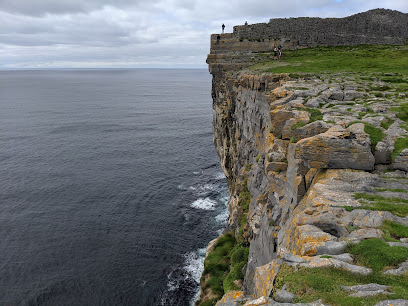
Joe Watty's Pub & Seafood Bar
Joe Watty's Pub & Seafood Bar: Dive into fresh seafood, live music, and the essence of Irish hospitality on Inis Mor.
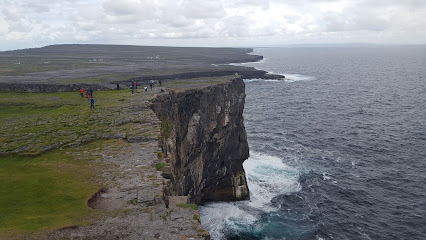
Plassey Shipwreck
Discover the haunting beauty of the Plassey Shipwreck on Inisheer, a remarkable site that combines maritime history with stunning coastal scenery.
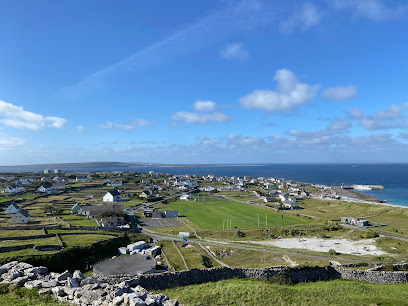
Teach Nan Phaidi
Discover the flavors of Ireland at Teach Nan Phaidi, a charming restaurant on Inis Mor, known for fresh local ingredients and a cozy atmosphere.
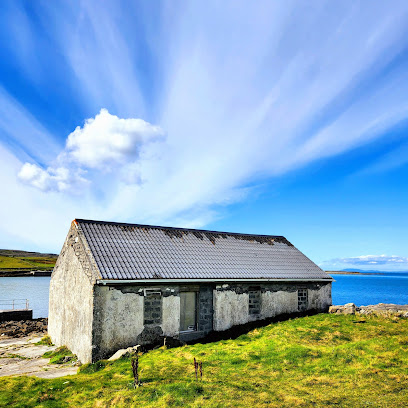
Aran Islands Hotel
Discover the enchanting Aran Islands Hotel, where comfort meets local charm amidst breathtaking coastal views in the heart of Ireland.
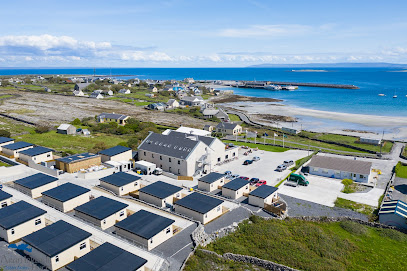
Kilmurvey Beach
Experience the tranquil beauty of Kilmurvey Beach in County Galway, where golden sands meet stunning sunsets and vibrant local culture.
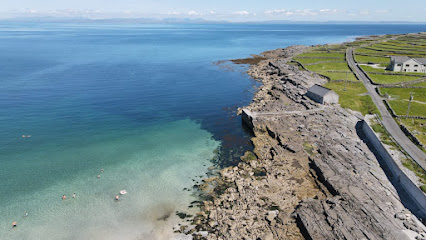
Aran Islands Information
Explore the breathtaking Aran Islands, a gem off Ireland's west coast, rich in culture, history, and stunning natural beauty.
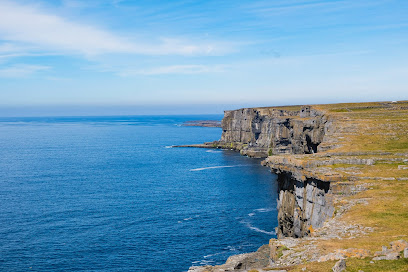
Na Seacht dTeampaill - The Seven Churches
Explore the ancient ruins of Na Seacht dTeampaill - The Seven Churches on the Aran Islands, a captivating historical landmark steeped in Ireland's ecclesiastical heritage.
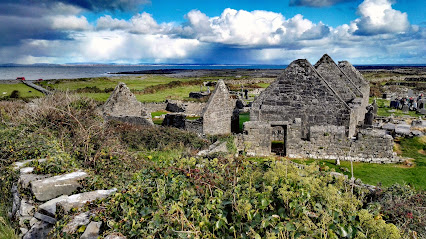
Aran Islands Camping & Glamping
Explore the breathtaking Aran Islands with a unique stay at Camping & Glamping, where nature meets comfort on Frenchman's Beach.

Poll na bPéist - The Wormhole
Explore the breathtaking Poll na bPeist - The Wormhole, a captivating natural wonder on Inishmore, surrounded by stunning cliffs and Atlantic beauty.

Aran Island Ferries
Explore the scenic beauty and rich heritage of the Aran Islands with Aran Island Ferries, a unique gateway to Ireland's coastal charm.
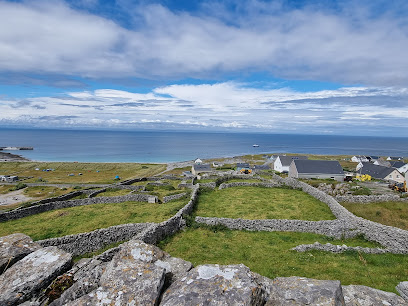
Tigh Ruairi (Rory's Pub) Bed & Breakfast, Inis Oirr, Aran Islands
Experience the essence of Irish hospitality at Tigh Ruairi, your cozy bed & breakfast on the enchanting Inis Oirr, Aran Islands.

Seal Colony Viewpoint
Discover the Seal Colony Viewpoint in Co. Galway, a breathtaking scenic spot perfect for observing seals and enjoying Ireland's stunning coastline.
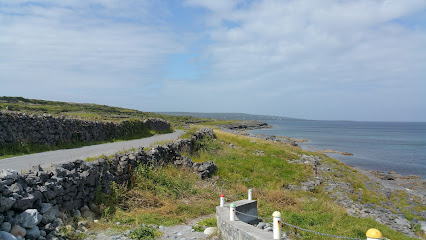
Inishmore
Explore Inishmore, the largest Aran Island, known for its stunning cliffs, rich heritage, and vibrant local culture - a must-visit for every traveler in Ireland.
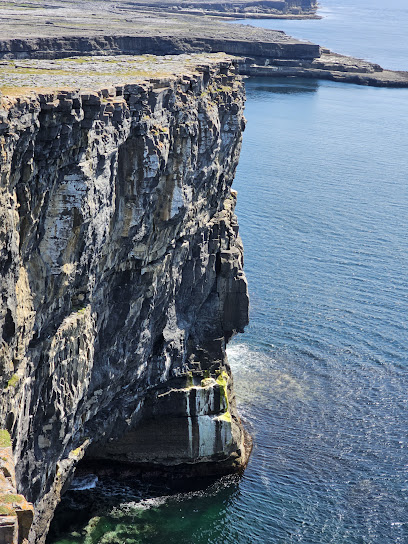
Unmissable attractions to see
O'Brien's Tower
Explore O'Brien's Tower, a historical landmark on the Cliffs of Moher, offering stunning views and a glimpse into Ireland's rich heritage.
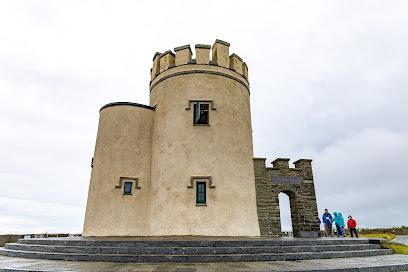
The Burren Perfumery
Discover the natural beauty and exquisite fragrances at The Burren Perfumery, a hidden gem in County Clare, Ireland.
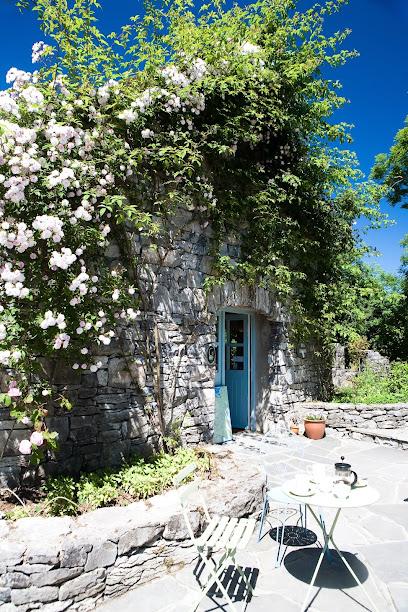
Charlie Byrne's Bookshop
Explore the enchanting world of literature at Charlie Byrne's Bookshop, a beloved gem in the heart of Galway, Ireland.
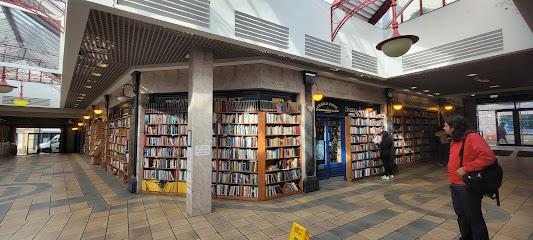
Aran Sweater Market
Discover the beauty of the Aran Sweater Market, where authentic Irish craftsmanship meets stunning island scenery for a unique shopping experience.
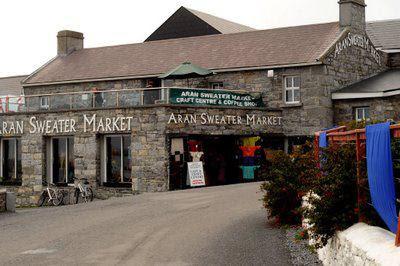
Dún Dúchathair (Black Fort)
Discover the ancient beauty of Dún Dúchathair, a historical landmark on Inis Mór Island, offering stunning coastal views and rich Irish heritage.
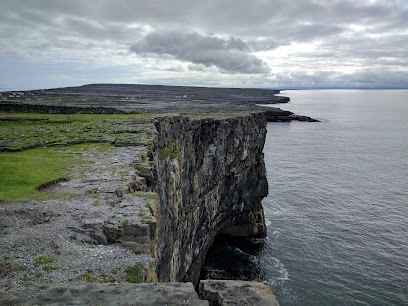
Teampall Caomhán
Explore Teampall Caomhán, the ancient sunken church on Inisheer Island, rich in history and stunning coastal views.
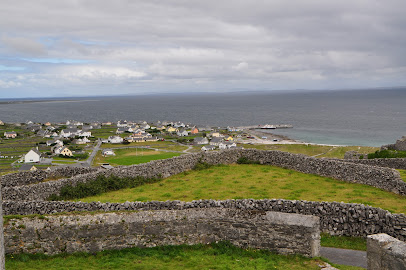
Newtown Castle
Explore Newtown Castle, a stunning historical landmark in Co. Clare, showcasing Ireland's rich heritage amidst beautiful landscapes.
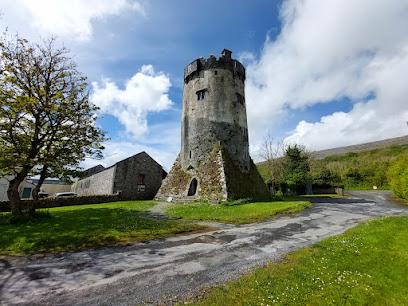
Cnoc Raithní
Discover the enchanting Cnoc Raithní on Inisheer, a historical landmark with breathtaking views and rich Irish heritage.
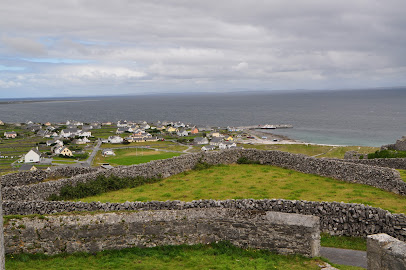
Gaslight Brasserie
Discover the culinary delights at Gaslight Brasserie, a charming dining spot in Eyre Square, Galway, offering a blend of traditional Irish and modern cuisine.

An Loch Mór
Explore the beauty of An Loch Mór, a peaceful lake on Inisheer Island surrounded by lush landscapes and rich history, perfect for nature lovers.
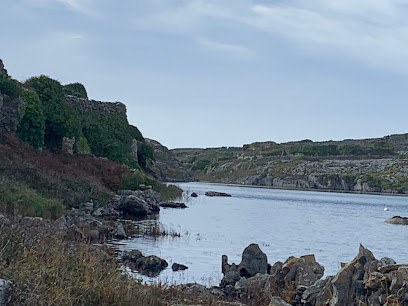
Teampall Bheanáin
Discover the ancient charm of Teampall Bheanáin, a historical landmark on Inishmore Island, where spirituality meets breathtaking natural beauty.

Cill Ghobnait (Church Ruin)
Explore Cill Ghobnait, an ancient church ruin on Inisheer, showcasing Ireland's rich history amidst breathtaking coastal views.
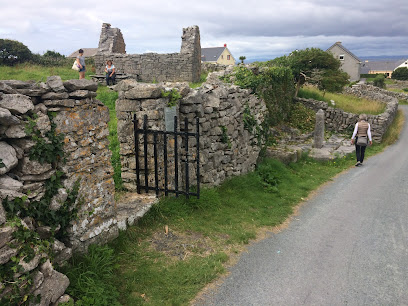
Shop St
Discover the vibrant atmosphere of Shop Street, Galway's premier destination for shopping, dining, and cultural experiences.

Aras Eanna Arts Centre
Discover the vibrant creativity of Inis Oírr at Aras Eanna Arts Centre, a hub for art, culture, and community in the heart of the Aran Islands.
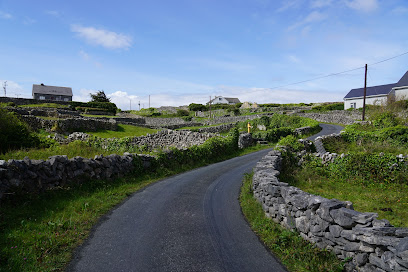
Legend of the Claddagh Ring
Explore the heartfelt history of the Claddagh Ring in Galway, where love, loyalty, and friendship come to life in a captivating museum experience.
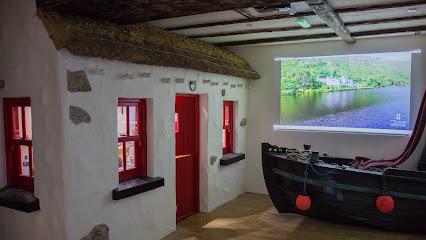
Essential places to dine
Joe Watty's Pub & Seafood Bar
Discover the heart of Aran Islands at Joe Watty's Pub & Seafood Bar - where fresh seafood meets live Irish music in a cozy atmosphere.
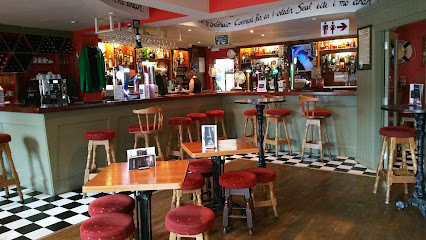
Teach Nan Phaidi
Discover the essence of Irish cuisine at Teach Nan Phaidi on Inis Mor - where every dish tells a story amidst breathtaking views.
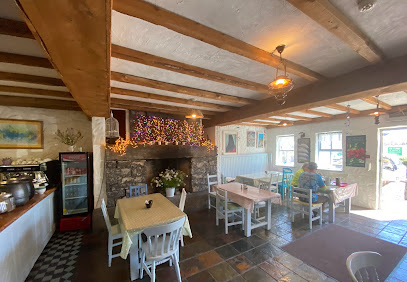
Aran Islands Hotel
Discover unmatched hospitality at Aran Islands Hotel – your gateway to exploring Ireland's breathtaking Aran Islands with delightful dining options.
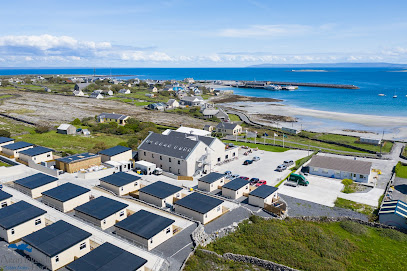
Tigh Ned
Discover Tigh Ned: An Iconic Irish Pub on Inisheer Island Offering Traditional Cuisine and Local Music.
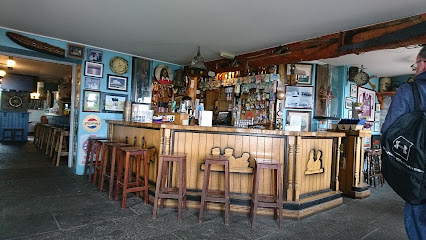
The Bar
Experience authentic Irish hospitality at The Bar on Inishmore with great drinks, delicious food, and lively entertainment.
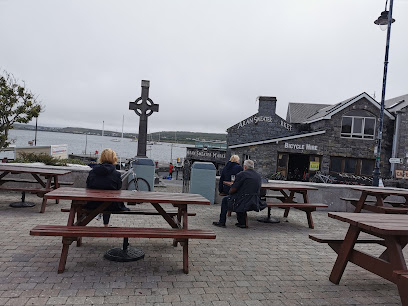
Bayview Restaurant
Experience authentic Irish and seafood cuisine at Bayview Restaurant in Kilronan, where stunning views meet artistic ambiance.
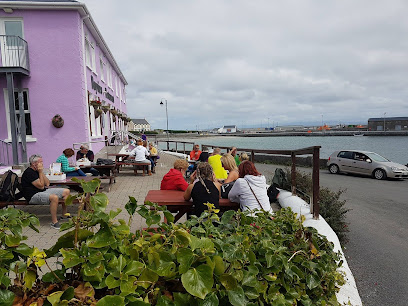
Tigh Ruairi (Rory's Pub) Bed & Breakfast, Inis Oirr, Aran Islands
Discover Tigh Ruairi Bed & Breakfast: A charming blend of comfort and local culture on Inis Oirr, Aran Islands.

'Teach an Tae', Café Aran & Tea Rooms
Experience authentic Irish hospitality at 'Teach an Tae', where every sip of tea and coffee is accompanied by breathtaking island views.

Inis Oírr Hotel- Flaherty's
Discover Inis Oírr Hotel- Flaherty's: A Culinary Gem on the Enchanting Aran Islands Offering Authentic Irish Cuisine.
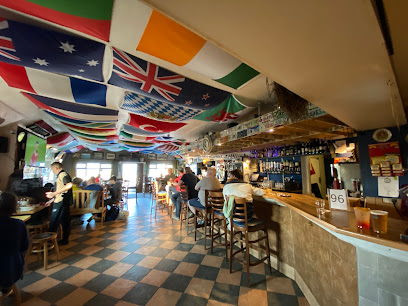
Tigh Joe Mac
Experience authentic Irish hospitality at Tigh Joe Mac in Killeany, Co. Galway – where every visit feels like coming home.
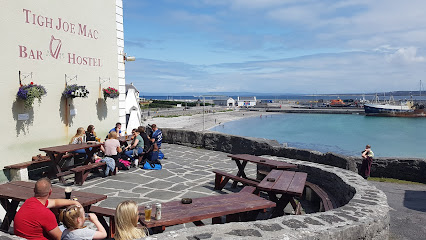
Inis Meáin Island Stays
Discover culinary excellence amidst breathtaking landscapes at Inis Meáin Island Stays on Ireland's enchanting Aran Islands.
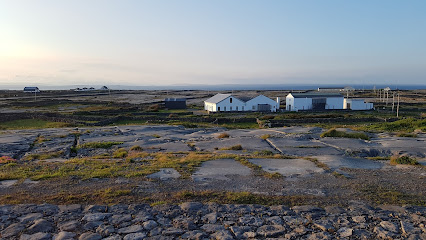
Café Úna
Experience the charm of Café Úna on Inisheer Island – where delicious homemade treats meet breathtaking coastal views.
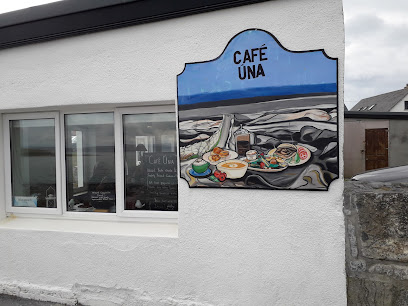
Aran Islands Cafe
Discover delightful flavors at Aran Islands Cafe in Inishmore—your cozy coffee retreat amidst breathtaking Irish landscapes.
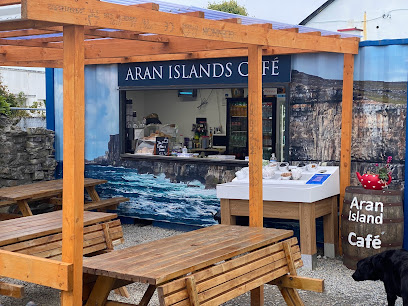
An Currach
Experience authentic Irish cuisine at An Currach on Inisheer Island – where local flavors meet stunning coastal views.

The Galley Fish & Chips
Experience authentic Irish cuisine at The Galley Fish & Chips – where fresh ingredients meet traditional flavors on the stunning Aran Islands.
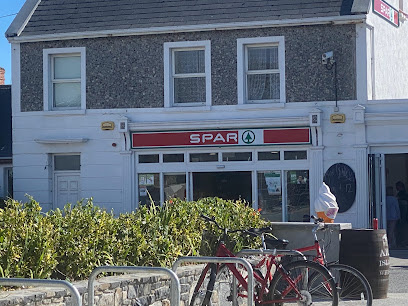
Markets, malls and hidden boutiques
Poll na bPéist - The Wormhole
Discover Poll na bPéist, a stunning natural wonder on Inis Mór, where the Atlantic waves meet extraordinary rock formations.

Aran Bike Hire
Discover the stunning Aran Islands on two wheels with Aran Bike Hire, your top choice for bicycle rentals in Kilronan, Ireland.
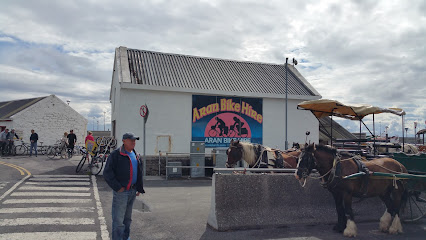
Tigh Ruairi (Rory's Pub) Bed & Breakfast, Inis Oirr, Aran Islands
Discover the charm of Inis Oirr at Tigh Ruairi, where Irish hospitality meets breathtaking landscapes and local culture.

Aran Sweater Market
Discover the Aran Sweater Market, where authentic Irish craftsmanship meets the stunning beauty of the Aran Islands. Perfect for unique gifts and cozy fashion.
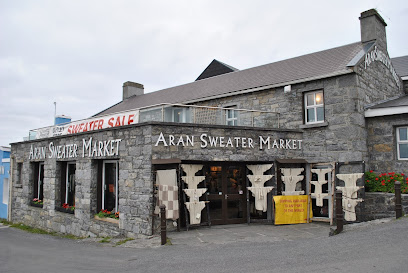
Spar
Discover the heart of Inis Mor at Spar, the go-to grocery store for locals and tourists alike, offering quality products at reasonable prices.
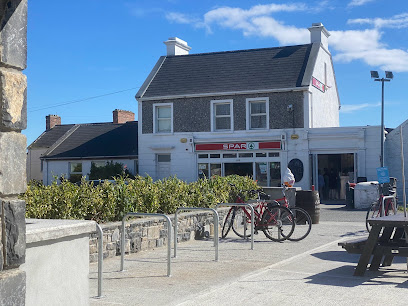
Dive Academy - Scuba Diving School
Discover the underwater wonders of Co. Galway at Dive Academy, the ultimate scuba diving school on the Aran Islands.
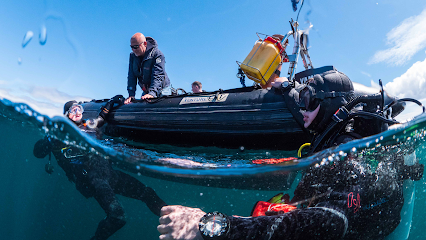
'Teach an Tae', Café Aran & Tea Rooms
Experience the heartwarming ambiance and delightful flavors at 'Teach an Tae' Café Aran & Tea Rooms on Inisheer, a true taste of Irish hospitality.
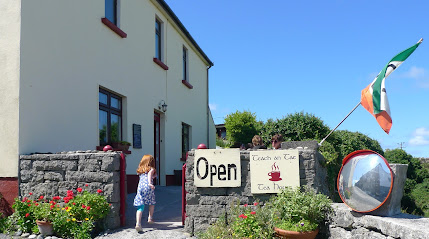
Paudy's Ice Cream
Discover the sweet flavors of Paudy's Ice Cream in Kilmurvy, Co. Galway, where every scoop is a taste of happiness and local charm.
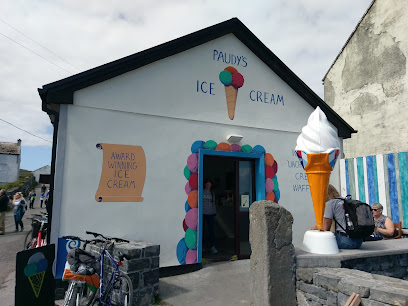
Rainbow Bike Hire
Experience the stunning Aran Islands on two wheels with Rainbow Bike Hire – your gateway to adventure and exploration in Co. Galway.
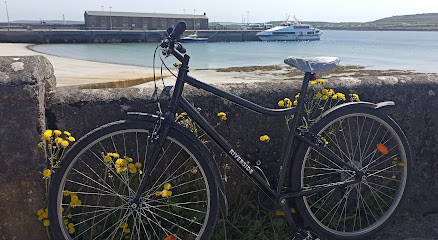
Siopa XL
Experience the charm of Inisheer at Siopa XL, your local grocery store for fresh produce, snacks, and essentials on this picturesque Irish island.
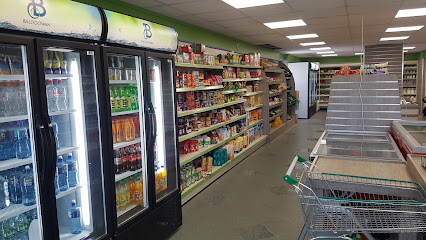
Man of Aran Fudge
Experience the taste of Ireland with handcrafted fudge at the charming Man of Aran Fudge on Inisheer, Co. Galway.

An Túirne - Aran Islands Sweaters
Experience authentic Irish craftsmanship at An Túirne - Aran Islands Sweaters, where you can find unique gifts and traditional Aran sweaters.
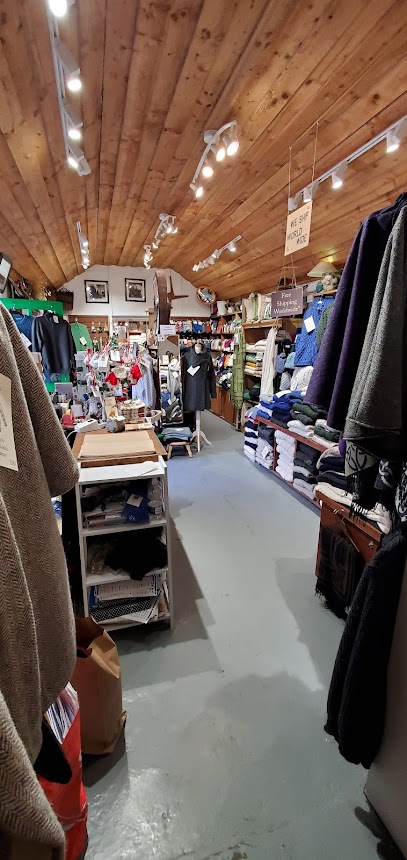
Minnie’s Café
Experience the warmth of Irish hospitality at Minnie’s Café, a cozy haven in Kilronan serving artisanal coffee and delicious pastries.
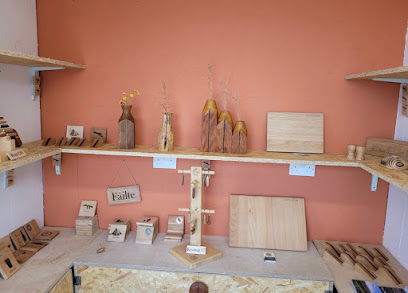
Aran Islands Cafe
Experience the essence of Irish hospitality at Aran Islands Cafe, where delicious food meets breathtaking coastal views in Inishmore.
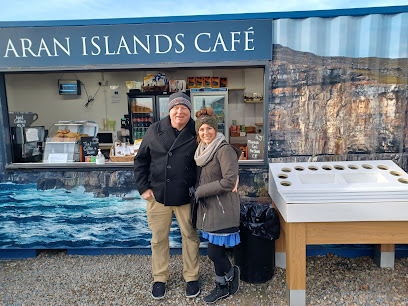
Lia Árann - Craft Shop
Explore Authentic Irish Crafts at Lia Árann - Your Gateway to Unique Souvenirs in the Aran Islands.

Essential bars & hidden hideouts
Joe Watty's Pub & Seafood Bar
Experience authentic Irish hospitality at Joe Watty's Pub & Seafood Bar, where fresh seafood meets lively local music in the heart of the Aran Islands.

Teach Nan Phaidi
Discover the best of traditional Irish cuisine at Teach Nan Phaidi on Inis Mor Island, where every meal is a celebration of local flavors and stunning views.
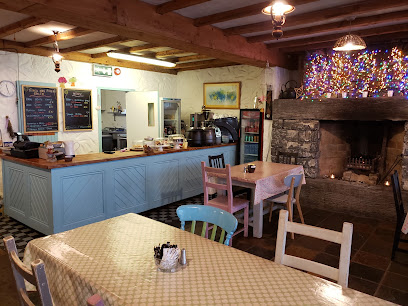
Aran Islands Hotel
Discover the tranquil beauty and rich culture of the Aran Islands at the welcoming Aran Islands Hotel, your gateway to unforgettable experiences.
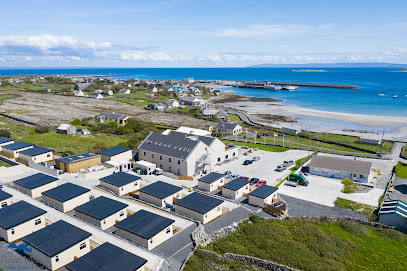
Tigh Ned
Experience authentic Irish culture at Tigh Ned, a charming pub in Inisheer with hearty meals, local brews, and a warm atmosphere.
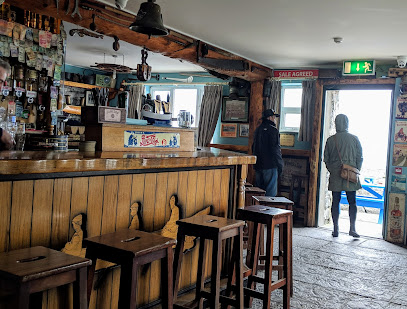
The Bar
Experience the warmth and charm of The Bar on Inishmore, where local brews and delicious bites await in a cozy setting.
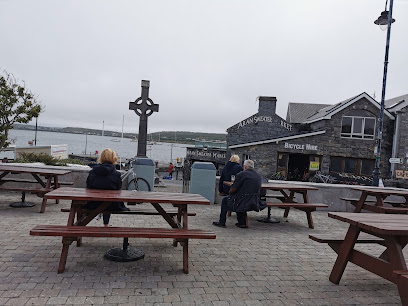
Bayview Restaurant
Discover the flavors of Ireland at Bayview Restaurant, where fresh seafood meets artistic flair in a stunning coastal setting.

Tigh Ruairi (Rory's Pub) Bed & Breakfast, Inis Oirr, Aran Islands
Discover Tigh Ruairi, a cozy bed & breakfast on Inis Oirr, where traditional Irish hospitality meets the breathtaking beauty of the Aran Islands.

Teach Ósta
Discover the rich history and warm hospitality of Teach Ósta, a charming pub in Co. Galway known for its local brews and vibrant atmosphere.
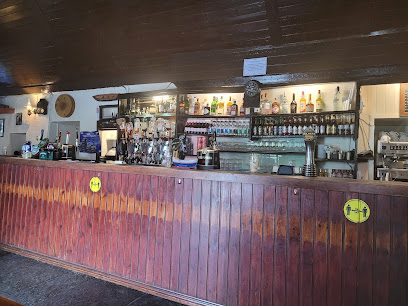
'Teach an Tae', Café Aran & Tea Rooms
Discover the heart of Irish hospitality at 'Teach an Tae', where homemade delights meet stunning island views on Inisheer.
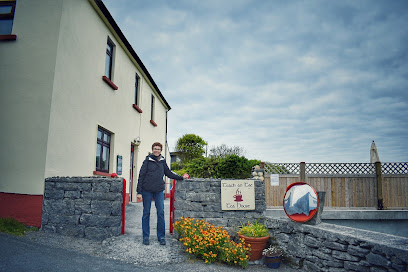
Inis Oírr Hotel- Flaherty's
Experience the flavors of Ireland at Flaherty's on Inis Oírr, where local ingredients meet breathtaking island views for an unforgettable dining adventure.
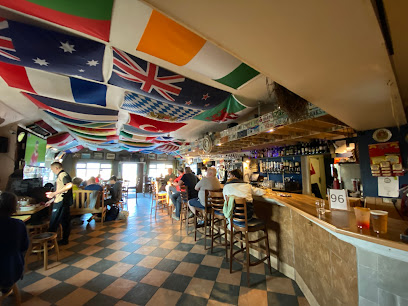
Tigh Joe Mac
Discover the heart of Irish culture at Tigh Joe Mac, a cozy pub in Killeany, Co. Galway, serving drinks, music, and traditional cuisine.
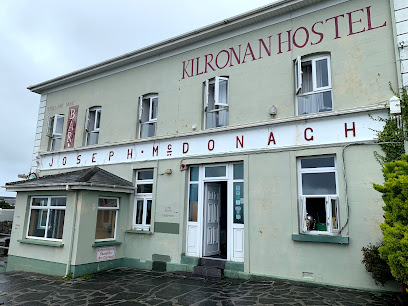
Poki's prosecco pitstop
Discover Poki's Prosecco Pitstop in Killeany, Co. Galway - a charming bar perfect for prosecco lovers and travelers seeking a cozy retreat.

Innismann
Discover the warmth and charm of Innismann Bar in Inishmaan, Co. Galway, where local flavors and friendly faces await every visitor.

Local Phrases about Aran Islands
-
- HelloDia dhuit
[Dee-uh gwitch] - GoodbyeSlán
[Slawn] - YesTá
[Taw] - NoNíl
[Neel] - Please/You're welcomeLe do thoil
[Leh duh hull] - Thank youGo raibh maith agat
[Guh rev mah agut] - Excuse me/SorryMaith thú
[Mah hoo] - How are you?Conas atá tú?
[Kun-us ah-taw too] - Fine. And you?Tá sé go maith. Agus tú?
[Taw shay guh mah. Ah-gus too] - Do you speak English?An bhfuil Béarla agat?
[On will bear-la ah-gut] - I don't understandNí thuigim
[Knee hug-im]
- HelloDia dhuit
-
- I'd like to see the menu, pleaseBa mhaith liom an ménu a fheiceáil, le do thoil
[Bah wyh lum on may-noo a ek-kyaal, leh duh hull] - I don't eat meatNí ithim feoil
[Knee i-him foh-il] - Cheers!Sláinte!
[Slawn-cheh] - I would like to pay, pleaseBa mhaith liom íoc, le do thoil
[Bah wyh lum ee-uk, leh duh hull]
- I'd like to see the menu, pleaseBa mhaith liom an ménu a fheiceáil, le do thoil
-
- Help!Cabhair!
[Kow-ir] - Go away!Imigh uaim!
[Ee-mee oom] - Call the Police!Glan an Garda!
[Glan on Gar-dah] - Call a doctor!Glan dochtúir!
[Glan dohk-too-ir] - I'm lostTá mé caillte
[Taw may kawl-cheh] - I'm illTáim tinn
[Taw-im chin]
- Help!Cabhair!
-
- I'd like to buy...Ba mhaith liom ceannach...
[Bah wyh lum can-ukh] - I'm just lookingNíl ach ag faire
[Neel ah-ukh eg fah-reh] - How much is it?Cé mhéad atá air?
[Kay vayd ah-taw air] - That's too expensiveTá sé ró-dháiríre
[Taw shay row-ghaw-ree-reh] - Can you lower the price?An féidir leat an praghas a laghdú?
[On fay-dir lat on proh-us ah lay-goo]
- I'd like to buy...Ba mhaith liom ceannach...
-
- What time is it?Cén t-am é?
[Kayn tahm ay?] - It's one o'clockTá sé a haon a chlog
[Taw shay a hayn a khlog] - Half past (10)Leathuair tar éis a deich
[Lah-hoo-ir tar aysh a deh] - MorningMaidin
[Mah-din] - AfternoonTráthnóna
[Tray-noh-nah] - EveningTráthnóna
[Tray-noh-nah] - YesterdayInné
[In-ay] - TodayInniu
[In-yoo] - TomorrowAmárach
[Ah-maw-rakh] - 1A haon
[Ah hayn] - 2Dó
[Doe] - 3Trí
[Tree] - 4Ceathair
[Cah-hir] - 5Cúig
[Koo-ig] - 6Sé
[Shay] - 7Seacht
[Shakht] - 8Ocht
[Ukht] - 9Naoi
[Nee] - 10Deich
[Deh]
- What time is it?Cén t-am é?
-
- Where's a/the...?Cá bhfuil a...
[Kaw will ah] - What's the address?Cén seoladh é?
[Kayn shol-ah ay?] - Can you show me (on the map)?An féidir leat mé a thaispeáint (ar an mapa)?
[On fay-dir lat may a hash-paint (ar on ma-pa)] - When's the next (bus)?Cathain atá an chéad cheann eile (bus)?
[Kah-hin ah-taw on khayd kyan el-eh (bus)] - A ticket (to ....)Ticéad (go dtí ....)
[Tick-ayd (guh dee)]
- Where's a/the...?Cá bhfuil a...
History of Aran Islands
-
The Aran Islands, composed of Inishmore, Inishmaan, and Inisheer, have been inhabited since prehistoric times. Evidence of early human settlement includes various stone forts and dwellings. The most famous, Dún Aonghasa on Inishmore, dates back to around 1100 BCE and offers a glimpse into the ancient world with its semi-circular fort perched on the edge of a cliff.
-
The spread of Christianity profoundly impacted the Aran Islands. Saint Enda, considered one of the 'Twelve Apostles of Ireland,' established a monastic community on Inishmore in the 5th century. The island became a center of learning and spirituality, attracting scholars and monks from across Europe. Ruins of early Christian churches and beehive huts can still be found scattered across the islands.
-
During the medieval period, the Aran Islands continued to serve as a spiritual and educational hub. Monasteries thrived, and the islands maintained a degree of autonomy, even as Ireland faced Viking invasions and later Norman conquests. Notable sites from this era include the Seven Churches on Inishmore, a complex that served as a significant monastic settlement.
-
The Aran Islands have long been a bastion of traditional Irish culture. The islanders have preserved the Irish language, or Gaeilge, which is still spoken today. Traditional music, dance, and crafts, such as the iconic Aran sweater, are integral to the islands' cultural heritage. The isolation of the islands has helped maintain these traditions over the centuries.
-
The Great Famine of the mid-19th century had devastating effects on the Aran Islands, as it did throughout Ireland. The islanders faced extreme hardship, with many succumbing to starvation or being forced to emigrate. Despite these challenges, the islands' community spirit and resilience helped them endure and eventually recover.
-
In the 20th century, the Aran Islands gained international recognition through literature and film. J.M. Synge's play 'Riders to the Sea' and Robert Flaherty's documentary 'Man of Aran' portrayed the islands' rugged beauty and the resilience of their inhabitants. Today, the islands attract tourists from around the world, drawn by their unique blend of natural beauty, historical significance, and cultural richness.
Aran Islands Essentials
-
The Aran Islands are accessible by ferry or plane. Ferries to the islands depart from Rossaveal in County Galway and Doolin in County Clare. The ferry ride from Rossaveal takes about 45 minutes, while the trip from Doolin can take up to 90 minutes depending on the weather. For those preferring air travel, Aer Arann operates flights from Connemara Airport to the islands, with a flight duration of approximately 10 minutes.
-
On the Aran Islands, bicycles are a popular mode of transportation and can be rented from various outlets. Taxis and minibuses are also available for hire, which can be especially useful for exploring the more remote parts of the islands. Walking is another excellent way to see the sights, given the islands' relatively small size. Cars are limited on the islands, especially on Inisheer and Inishmaan, so plan accordingly.
-
The official currency is the Euro (€). While some businesses may accept credit and debit cards, it is advisable to carry cash, particularly for smaller transactions or in less frequented areas. ATMs are available on Inishmore, the largest of the islands, but may not be present on the smaller islands.
-
The Aran Islands are generally very safe for tourists. Crime rates are low, and violent crime is extremely rare. However, as with any travel destination, it is wise to stay vigilant and keep an eye on your belongings, particularly in crowded areas like ferry ports. Be cautious when exploring cliffs and other natural features, as the terrain can be rugged and potentially dangerous.
-
In case of an emergency, dial 999 or 112 for immediate assistance. Medical facilities are available on Inishmore, including a health center and a pharmacy. It is advisable to carry basic first aid supplies and any necessary medications. For more serious medical issues, you may need to be transported to the mainland.
-
Fashion: Do wear comfortable and weather-appropriate clothing, as the weather can be unpredictable. Layers and waterproof gear are recommended. Avoid overly revealing attire. Religion: Do respect local customs and traditions. When visiting religious sites, dress modestly and behave respectfully. Public Transport: Do be mindful of schedules, as ferry and flight times are limited. Greet the drivers and other passengers courteously. Greetings: Do greet people with a friendly 'hello' or 'dia dhuit' (hello in Irish). A handshake is also common. Eating & Drinking: Do try local dishes like seafood and soda bread. Don't be overly fussy about food offerings, as hospitality is a valued trait.
-
To experience the Aran Islands like a local, rent a bicycle and explore the scenic routes at your own pace. Visit local pubs to enjoy live traditional Irish music and engage with the friendly islanders. Take the time to learn a few words of Irish, as the islands are a Gaeltacht (Irish-speaking) area. Don't miss the opportunity to visit historical sites such as Dun Aonghasa on Inishmore and the ancient churches and forts scattered across the islands.
Trending Landmarks in Aran Islands
-
Doolin Ferry
-
Dún Aonghasa
-
Joe Watty's Pub & Seafood Bar
-
Plassey Shipwreck
-
Teach Nan Phaidi
-
Aran Islands Hotel
-
Kilmurvey Beach
-
Aran Islands Information
-
Na Seacht dTeampaill - The Seven Churches
-
Aran Islands Camping & Glamping
-
Poll na bPéist - The Wormhole
-
Aran Island Ferries
-
Tigh Ruairi (Rory's Pub) Bed & Breakfast, Inis Oirr, Aran Islands
-
Seal Colony Viewpoint
-
Inishmore
Nearby Cities to Aran Islands
-
Things To Do in Galway
-
Things To Do in Ennis
-
Things To Do in Westport
-
Things To Do in Limerick
-
Things To Do in Tralee
-
Things To Do in Dingle
-
Things To Do in Killarney
-
Things To Do in Athlone
-
Things To Do in Sligo
-
Things To Do in Cork
-
Things To Do in Kilkenny
-
Things To Do in Kinsale
-
Things To Do in Waterford
-
Things To Do in Dublin
-
Things To Do in Drogheda













